Country Information - Islamic Republic of Pakistan اسلامی جمہوریۂ پاکستان (PART 06)
Rural and Urban DivideA typical view of most of Pakistan's Rural areas (Photo Courtesy Jalalspages)
Rural Pakistan
The rural scene has remained unchanged since decades. Most of the villagers still live far from the hustle and bustle of the urban areas and still live in their mud houses with almost non-existent civic amenities. The unpolluted environment with lush green fields stretched as far as the eye can fathom. The chirping of birds on old banyan trees and wandering of domesticated animals still seen on the dirt tracks and around small ponds filled with rain water. The donkey and horse / cattle driven carts still remain the basic means of transportation. However, lately with the carpeting of the dirt tracks and opening of roads from the farms to the markets in the nearby towns and cities, life styles are changing. Mud houses are being replaced with brick houses, motorcycle driven rickshaws, called "Ching-Chees" are fast replacing horse driven carts and small lift carriers and beautifully decorated buses changing business convenience. Electricity is fast approaching villages and small town, which beside running the tube wells have also lit up the villages, where once people used to retire soon after the sunset. The availability of WLL / cellular phones has replaced the age old home-delivered mail system. Even internet is now available in small towns and large villages. The rural-urban divide is narrowing at a very rapid pace.
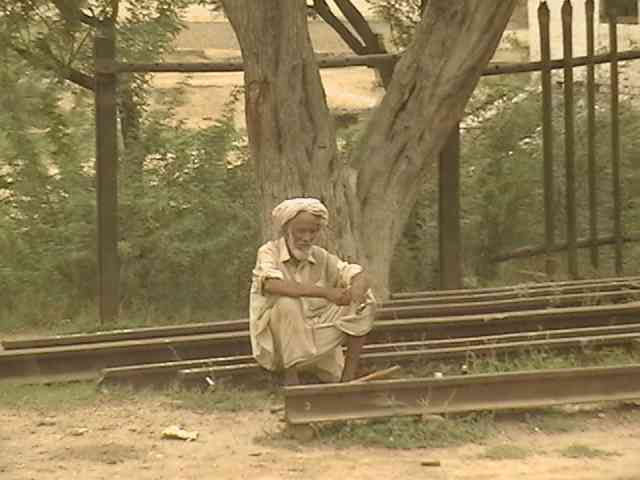
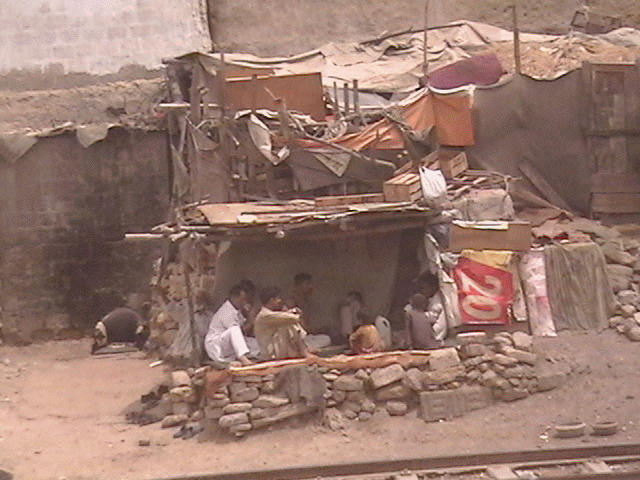
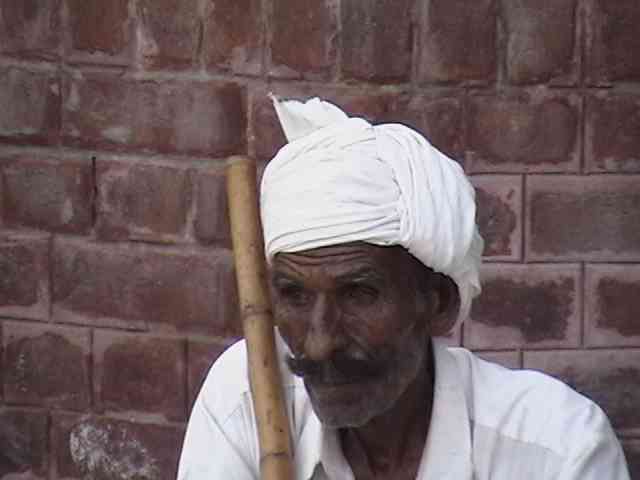
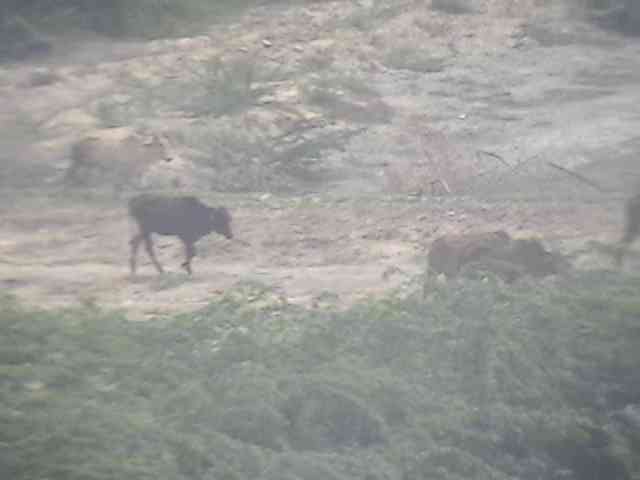
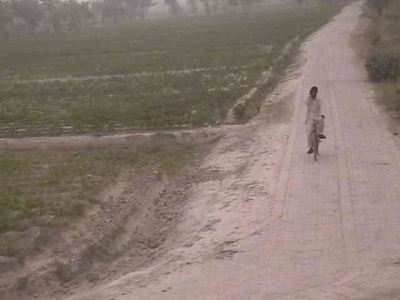
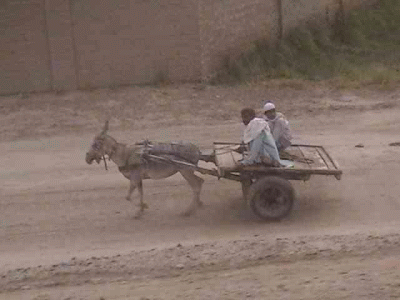
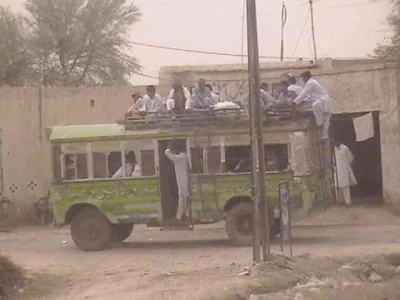
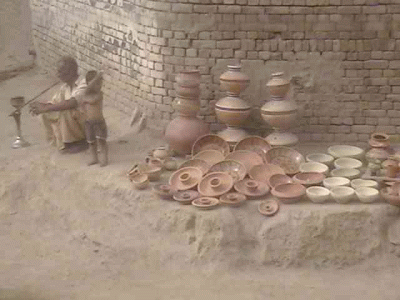
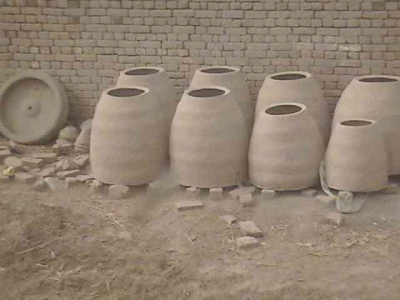
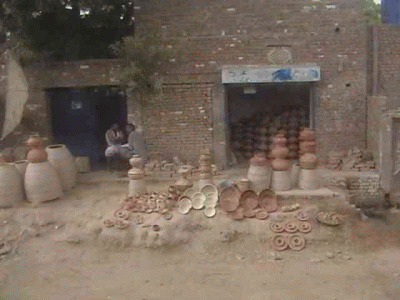
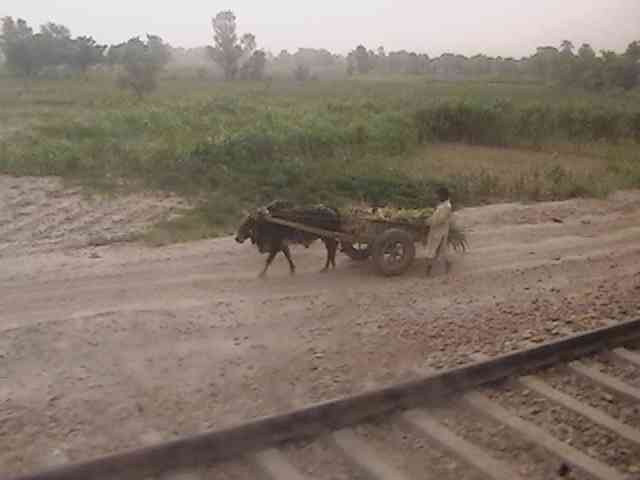
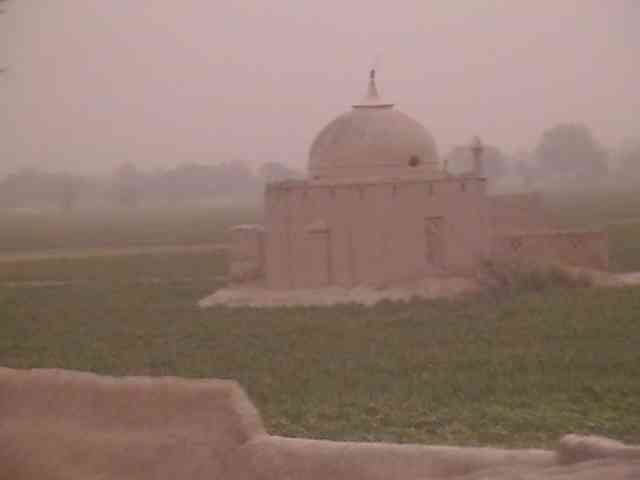
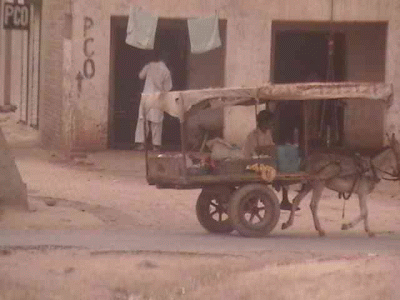
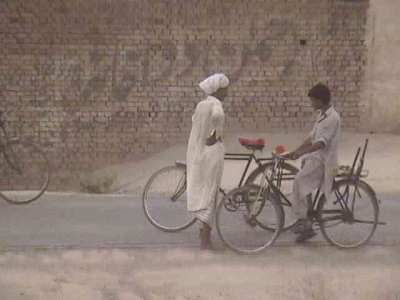
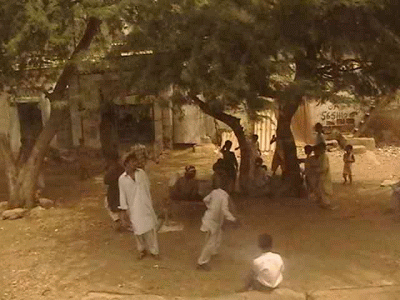
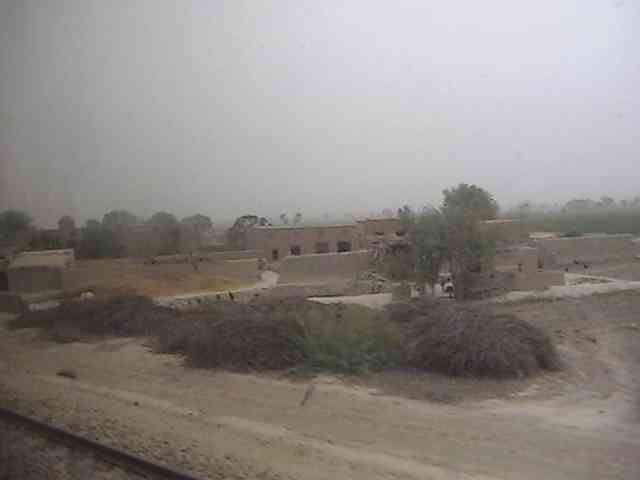
The Dawn of Civilizations
| | The Indus Valley settlements are spread along the Indus River and the Ghaggar-Hakra river in what is now Pakistan. These settlements can be found as far south as Mumbai, or Delh in esti, to the west to the Iranian border, and as far north as the Himalayas. Among the settlements were the major urban centers of Harappa and Mohenjo-daro, as well as Dholavira, Ganweriwala, Lothal, and Rakhigarhi. At its peak, the Indus Civilization may have had a population of well over five million. | |
|
These days, however, trends are changing and some Kafirs are converting to Islam, leaving their age old traditions and customs. For some it is beginning of a demise of an old civilization - for others it is dawn of a new life.
| The interaction between Hellenistic Greece and Buddhism started when Alexander conquered Asia Minor, the Achaemenid Empire and ancient Pakistan in 334 BCE, defeating Porus at the Battle of the Hydaspes (near modern-day Jhelum, Pakistan) and conquering much of the Punjab. Alexander's troops refused to go beyond the Beas river — which today runs along part of the Indo-Pakistan border. Alexander created garrisons for his troops in his new territories, and founded several cities in the areas of the Oxus, Arachosia, and Bactria, and Macedonian/Greek settlements in |
India under Muslims
The Arabs and Muslim Rulers The genesis of Pakistan is linked with the advent of Islam in the Indo-Pakistan sub-continent after the conquest of Province of Sind in 711 AD by Mohammad bin Qasim, the Arab general and nephew of ruler of Iraq and Persia. The Arab invasion was later a cue for many such adventures by Muslim conquerors from the North, which continued for next ten centuries and thus Islam flourished by leaps and bounds. | The Mughuls |
Impact on Culture and Architecture
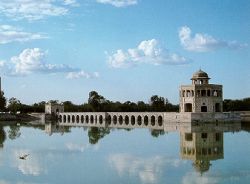 From 711 AD onwards, when Muhammad Bin Qasim invaded the coastal town of Bhambore, the culture of this part of the Indian sub-continent changed from statues to calligraphy, Quranic engravings and change in the life style of the people. Though the Arabs did not left profound imprints, it was the Afghans, Turks and Persians who changed the architecture, life style and above all the language and its script. Strategically built forts, tombs and mosques sprang up all over the sub-continent, some which are still preserved close to their original form (specially the mosques and the tomb, and the Islamic calligraphy and art) while forts are deteriorating due to negligence.
From 711 AD onwards, when Muhammad Bin Qasim invaded the coastal town of Bhambore, the culture of this part of the Indian sub-continent changed from statues to calligraphy, Quranic engravings and change in the life style of the people. Though the Arabs did not left profound imprints, it was the Afghans, Turks and Persians who changed the architecture, life style and above all the language and its script. Strategically built forts, tombs and mosques sprang up all over the sub-continent, some which are still preserved close to their original form (specially the mosques and the tomb, and the Islamic calligraphy and art) while forts are deteriorating due to negligence.
 Although the British pioneered the railway system in the subcontinent, Sher Shah Suri built the Uttarâpatha "the upper road" which connected the cities of the Ganges plain (e.g., Patna), with the towns in the eastern Punjab (Amritsar, Lahore), and Taxila in the western Punjab and Peshawar in NWFP. The present day Grand Trunk Road has almost the same alignment as of the Upper Road or sometimes referred to as Gernaili sarak. The remains of the road can still be found near Rawalpindi just besides the Nicholson's monument.
Although the British pioneered the railway system in the subcontinent, Sher Shah Suri built the Uttarâpatha "the upper road" which connected the cities of the Ganges plain (e.g., Patna), with the towns in the eastern Punjab (Amritsar, Lahore), and Taxila in the western Punjab and Peshawar in NWFP. The present day Grand Trunk Road has almost the same alignment as of the Upper Road or sometimes referred to as Gernaili sarak. The remains of the road can still be found near Rawalpindi just besides the Nicholson's monument.
 Suri aslo built the the massive and impressive Rohtas Fort in 1540 A.D. The strength and width of this fort can be imagined from the fact that it could easily accommodate 12,000 men of Sher Shah's army who were once stationed here to defend his domain against the Ghakkar tribes living in the vicinities of the Salt Range.
Suri aslo built the the massive and impressive Rohtas Fort in 1540 A.D. The strength and width of this fort can be imagined from the fact that it could easily accommodate 12,000 men of Sher Shah's army who were once stationed here to defend his domain against the Ghakkar tribes living in the vicinities of the Salt Range.
Till the arrival and gaining of the stronghold of entire subcontinent by the Euorpeans, specially the British, the landscape of India changed altogether and Islam was at its highest. It produced a pattern of organized unity, though it gradually dismantled due to ineptness of the rulers in the later part of 17th century and served as a harbinger for the British to take over and inject a new cultural and economic system completely tangent to what has been in vogue.(More details about Mughul architecture in site about Lahore).
India under the British
Vasco da Gamma was the first European to travel to India, that resulted into Portuguese conquest of Goa in 1510 and conversion of locals to Catholic branch of Christianity. The Protestants (the Netherlands and England) reacting to this also came in, first as traders and later to rule. As the British trade expanded, they got involved in local politics in the south and Bengal. Finally the British East India Company forces, led by Robert Clive, tacitly collaborating with the wazirs of Nawab Siraj-ud-Dawlah defeated the Nawab at Plessey in Bengal in 1757. Here onwards there was no stopping for them to expand and reach to the seat of Moguls in Delhi.
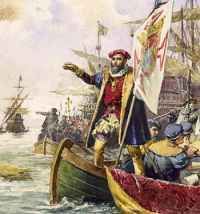

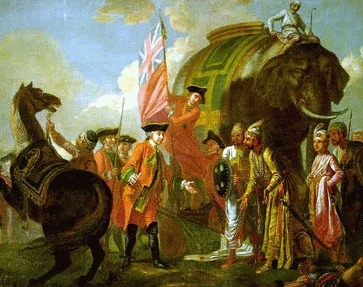

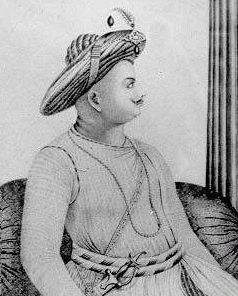
Left to Right - Vasco da Gamma - Robert Clive - Success Photograph - Nawab Siraj ud Dawlah - Tipu Sultan of Sarangapatam
![]() By and by with the use of subsidiary agreements between the British and inept local rulers, the control of foreign affairs, defence, and communications was transferred from the rulers to the company. Combining with this, the outright military conquests further brought Indian territory under British India. At the start of the 19th century, most of present-day Pakistan was under independent rulers. The kingdom of Lahore was the most powerful under Maharaja Ranjit Singh, when Sikh control was extended beyond Peshawar, and Kashmir was added to his dominions in 1819. After Ranjit's death in 1839, the British took advantage of the fragile political scene and annexed Punjab militarily, including the present-day North-West Frontier Province. The Mayor's Court, established in 1727 for civil litigation in Bombay, Calcutta, and Madras, justice in the interior came under the company's jurisdiction. During William Cavendish Bentinck, the governor-general from 1828 to 1835, English replaced Persian in public administration and education. Kashmir sold under a treaty to the Dogra Dynasty, which ruled the area until 1947.
By and by with the use of subsidiary agreements between the British and inept local rulers, the control of foreign affairs, defence, and communications was transferred from the rulers to the company. Combining with this, the outright military conquests further brought Indian territory under British India. At the start of the 19th century, most of present-day Pakistan was under independent rulers. The kingdom of Lahore was the most powerful under Maharaja Ranjit Singh, when Sikh control was extended beyond Peshawar, and Kashmir was added to his dominions in 1819. After Ranjit's death in 1839, the British took advantage of the fragile political scene and annexed Punjab militarily, including the present-day North-West Frontier Province. The Mayor's Court, established in 1727 for civil litigation in Bombay, Calcutta, and Madras, justice in the interior came under the company's jurisdiction. During William Cavendish Bentinck, the governor-general from 1828 to 1835, English replaced Persian in public administration and education. Kashmir sold under a treaty to the Dogra Dynasty, which ruled the area until 1947.
The East India Company continued to ruthlessly rule the areas it brought under its control through covert brutal means and use of force largely against the Muslim rulers, who betrayed by their own wazirs lost area after area to the Company Rule. The end to the Company Rule was in fact triggered by an incident, which is known as the Mutiny, Sepoy Rebellion or Revolt by the British and War of Independence by the natives. The origins of the soldiers' rebellion at Meerut, in which native soldiers rose up against their colonial officers, to the Lee-Enfield Rifle. It was developed at the Enfield arsenal by James P. Lee and fired a .303 caliber ammunition that had to manually loaded before firing. Loading involved biting the end of the cartridge, which was greased in pig fat and beef tallow. This presented a problem for native soldiers, as pig fat is a haraam, or forbidden, substance to Muslims, and beef fat is, likewise, deemed inauspicious for certain Hindus. Thus, the revolt occurred as a reaction to this particular intrusion into Hindu and Muslim culture, and then caught on as a national rebellion.
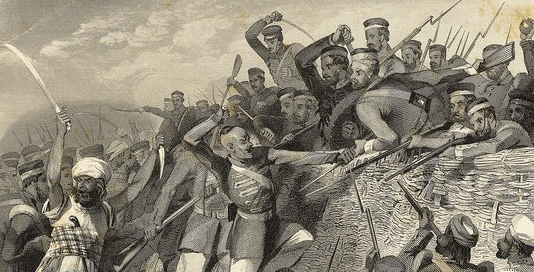
0n 24 April, the 3rd Light Cavalry refused to accept the cartridges. They were confined to their lines. A court-martial was convened and all the men who refused the ammunition were convicted and sentenced to 10 years hard labour. On Saturday 9 May 1857 all the troops at Meerut were assembled on the parade ground in a three sided square with the convicted men marched to the open side. There were 1700 European troops all armed and a larger number of native troops unarmed. The convicted men were stripped of their uniforms, boots removed and ankles shackled. They were marched off to New Gaol. As they passed, several of them threw their boots at Colonel Carmichael-Smyth, cursing him in Hindustani. That night warnings were received that there would be a mutiny the next day. The colonel, the brigadier, and the major-general all dismissed the idea. At six o'clock the next evening, Sunday 10 May 1867, the native infantry
set fire to their barracks and within a short time a full-fledged armed disobedience was underway. By midnight the native soldiers had moved out in an armed column for Delhi. The next day saw a massacre of Europeans in Delhi. This was the start of the War of Independence which spread to Muttra and Lucknow by the 30 of May and to Bhurtpore by the 31. On June 5 the 2nd Cavalry mutinied at Kanpur followed by the disobedience of the 6th NI at Allahabad. the next day. the massacre at Jhansi was on the 8th of June. The police in Lucknow mutinied on June 11. The massacre at Kanpur took place on 27 June. Fighting continued throughout the next year finally ending at the Battle of Gwaliar on 19 June 1858.
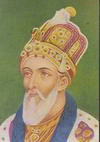
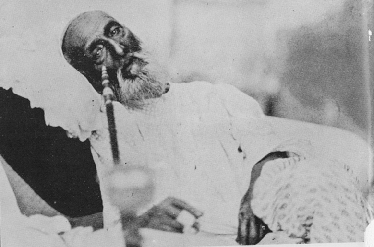
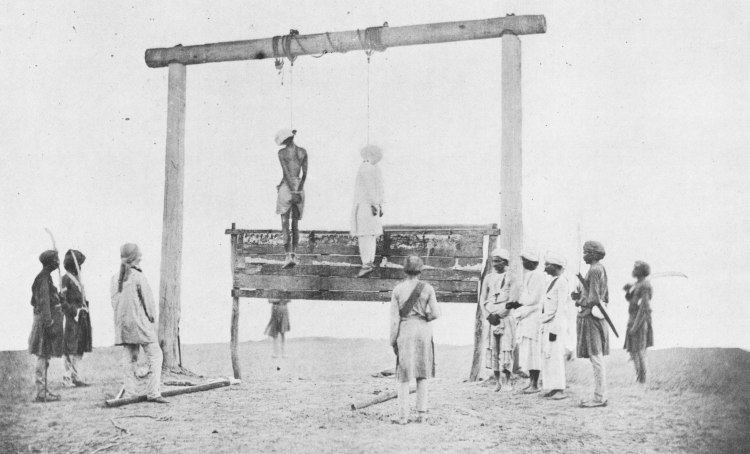
Bahadar Shah Zaffar - The Last Moghul Emperor who died in exile in Rangoon (centre) - Price of Freedom (right)
In Dehli, the first of the battles were fought before the British regained control. Bahadur Shah II, pensioned descendant of the Mogul dynasty, was popularly acclaimed emperor. On June 8 a British relief force defeated an army of natives at Badli Sari and took up a position on the famous ridge, overlooking the city of Delhi. Nominally the besieging force, they were themselves besieged by the mutineers, who made a daring attempt to intercept their train. The arrival of more British reinforcements finally led to the defeat of the natives by John Nicholson, commander of the relief force. After six days of street fighting, Delhi was recaptured. This action was the turning point in the campaign and is known as Siege of Delhi. The failed "War for the Independence (or the Mutiny as labeled by the British) in 1857, brought an end to the Muslim rule in the Indian sub-continent. The last Mogul Emperor Bahadar Shah Zafar was exiled, while all his princes were brutally tortured and later hanged publicly in streets of Delhi. The British thereafter were free to further explore the raw materials for English factories, established railroad network, telegraph system and postal service (first postal stamp right), which firmly secured the British permanence in India.
Unlike the masters of East India Company, India under British did lot of progress in the fields of postage, industry, rail-road and communication. The rail network was spread all over the sub continent and steam engines went as far as Chamman near Afghanistan through Khojak Railyway Tunnel, a marvel of 19th century, and Landi Kotal on one of the most difficult train links in the world at that time. Electric trains were introduced in India as early as 1901, and an elaborate network of canals and barrages was installed to irrigate the lands all over the sub-continent. Sukkur Barrage was built on the river Indus in 1931, with its impressive Lloyds Bridge, which at that time was considered to be the largest irrigation system of the world. Though, due to the extensive network of canals, later many areas came under water logging and salinity. The Victorian style of buildings thrived in every nook and corner of the country. New cities like present day Karachi, Rawalpindi, Faisalabad (Lyallpur), Sahiwal (Montgomery) in areas that constitute Pakistan today.
Victorian Impact on Culture
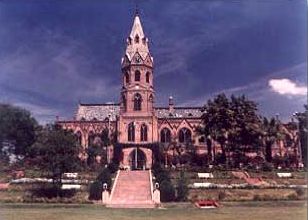

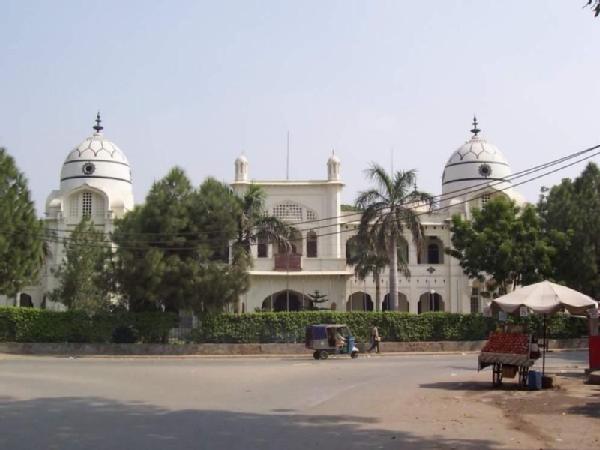
STRUGGLE FOR INDEPENDENCE
"Jange-e-Azadi" | Ali Garh to Muslim League As a consequence to 1857 events, the British government brought India under the direct control of Crown and a Viceroy was appointed to represent the Crown. They also increased the number of British soldiers in relation to native and allowed only British soldiers to handle artillery. In 1877 Queen Victoria took the title of Empress of India. Bahadur Shah was exiled to Rangoon, in Burma where he died in 1862, finally bringing the Mughal dynasty to an end. Although the "Jange-e-Azadi" (Liberation War) was brutally quelched, the spark for independence and throwing away the yoke of slavery at the hands of the British had been ignited. |
Jinnah and Pakistan Movement | The Lahore Resolution |
Lahore Resolution (left) - The famous speech by Muhammad Ali Jinnah on 3 June 1947 (right)
The Final Days The one year period between 1946 till partition of India was very confusing, disturbing and crucial for the future of the Muslims. The British now realized that Muslims were a powerful entity and could not be ignored. But at the same time they never wanted to annoy the Hindus who were in majority. Therefore in 1946, a delegation from England arrived with three suggestions: (1) The Constituent Assembly should prepare the constitution, (2) Adoption of federal form of government and (3) British India to be divided in three groups: (a) First Group - Muslim majority provinces of Bengal and Asam, (b) Second Group - Punjab, NWFP, Sind and Balochistan and (c) the Hindu majority Third Group. All groups should compulsorily remain in the Federation for TEN YEARS, after which they had the choice to get separated and become independent. | End of an Empire |
The Birth of a Nation
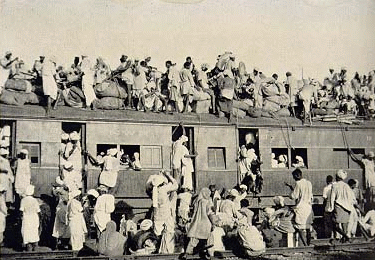
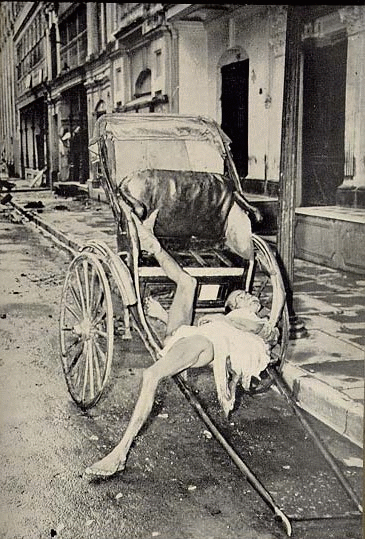
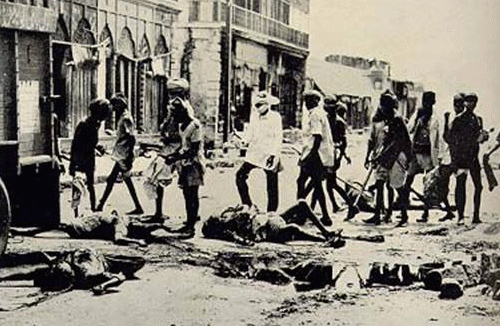
Price of the Freedom
| |
14 August 1947, a day in the history when a new nation was carved out of the British India after a long and tiring struggle of Muslims of India. For years since 711 AD, when Muhammad Bin Qasim invaded the Indian sub-continent, Muslims had been the rulers till subjugated by the British in 1857. Therefore, the independence in 1947 from the British yoke was a God-given opportunity to live as per the aspirations of Islamic values. From 1947 till date, Pakistan's history has seen many ups and downs, finally losing half of it in 1971. The history of Pakistan can easily be divided into roughly 10-years brackets, each having own peculiarities and repercussions on its future.
| |  The political turmoil leads to imposition of Martial Law in the country and for next ten years Ayub Khan steers the country to the path of economic stability - though away from political rule. Read More... The political turmoil leads to imposition of Martial Law in the country and for next ten years Ayub Khan steers the country to the path of economic stability - though away from political rule. Read More... |  The on going tussle between the president and his ex foreign minister Mr Bhutto results into widespread processions and agitation. Ayub leaves and General Yaya becomes the president. Comes 1971 and Pakistan loses its east wing. Read More... The on going tussle between the president and his ex foreign minister Mr Bhutto results into widespread processions and agitation. Ayub leaves and General Yaya becomes the president. Comes 1971 and Pakistan loses its east wing. Read More... |
 Zulfiqar Ali Bhutto's rule in 1971 though provided Pakistan a new direction, but his extremely ruthless policies agitated other politicians. The widespread demos brings in General Zia. His 11 years rule braves the Afghan War, but his Islamization brings into fundamentalism. Zulfiqar Ali Bhutto's rule in 1971 though provided Pakistan a new direction, but his extremely ruthless policies agitated other politicians. The widespread demos brings in General Zia. His 11 years rule braves the Afghan War, but his Islamization brings into fundamentalism.Read More.... |  The death of General Zia in plane crash ushers in the political rule - but it becomes a cat and mouse game between the two prime ministers, Benazir and Nawaz Sharif. Three presidents also change hands. Read More .... The death of General Zia in plane crash ushers in the political rule - but it becomes a cat and mouse game between the two prime ministers, Benazir and Nawaz Sharif. Three presidents also change hands. Read More .... |  However, this spell of political rule also abruptly ends when Nawaz Sharifharif develops dispute with the Army Chief and refuses landing to his aircraft while the latter is returning from abroad. The boots again march in and General Pervez takes over as the CE and later the president of Pakistan. Read More... However, this spell of political rule also abruptly ends when Nawaz Sharifharif develops dispute with the Army Chief and refuses landing to his aircraft while the latter is returning from abroad. The boots again march in and General Pervez takes over as the CE and later the president of Pakistan. Read More... |
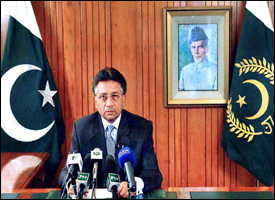 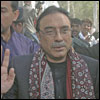 | ||
| And 2008 .... Would Things Change?? |
2008 .... Would Things Change??
| |  | | 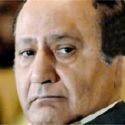 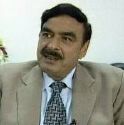 | ||||
| The Victors | and the Vanquished | ||||||
|
| Perhaps 2008 would be one of the most crucial years of Pakistan's turbulent past - since this year a new political era is in the offing. A year when two arch rivals (PPPP and PML-N) are to forge a new political alliance forgetting the bitter past when Nawaz Sharif labeled a number of allegations against Benazir Bhutto and her husband Asif Ali Zardari. These allegations dragged Zardari into courts and jails for years and even government of General Pervez Musharraf took some time to release Zardari and allowed him to go abroad. It was again General Pervez Musharraf who allowed Benazair, Zardari and Nawaz back into the country in what was called a National Reconciliatory Ordnance, specially promulgated to allow PPPP to form new government in Pakistan. Things however did not work well and no deal could be struck between the government and PPPP. With the tragic death of Benazir in a bomb blast in Rawalpindi on 27 December 2007, the entire political canvas changed and brought to fore Asif Ali Zardari as co-chairperson of PPPP. After the elections of 18 February 2008, many of the King's party tumbled and the ruling party of PML (Q) crumbled agianst the PPP and PML (N). The first budget presented by the PPP government failed to address the issues of load shedding, the price hike and the law and order in the country. It also failed to stop the cross border attacks by the US-led coalition forces, which recently killed scores of civilians including 11 military personnel (one major included). This In the meantime, the country is in a grip of high inflation, high oil prices, shortage of wheat and acute shortage of electricity. But the judges issue seems to have overtaken every other issue - so while the people lament and suffer for want of food and electricity, the politicians, specially the PML (N), seem busy only in one issue - restoration of the judges and impeachment of the president. There have been developments of impeachment of the president by the ruling coalition since long, which coupled with the restoration of the judges was taking a heavy toll of the Pakistani economy which was nose diving and the Re had gone the lowest ever in the history (Rs.77+ for 1US $) and the stock market had came back to under 10,000 points after sky rocketing over 15,000 points. The country was in a grip of despair as everyone seemed to be obsessed by the president's impeachment and the judges issue. While the charge sheet against the president was being readied, and all the four provincial assemblies have unanimously demanded resignation of the president, the hard decision finally came on midday 18 August when in a live TV broadcast, president Pervez Musharraf bid farewell to the presidency after a sentimental speech of over one hour. In his address to the nation, he said he was stepping down to avoid confrontation between the institutions and presidency and the parliament and in the best interest of the nation and to save the country from further destabilization. He said for him it is always Pakistan first and added that politics of confrontation must come to an end and instead a policy of reconciliation be pursued. The President said he took all decisions with consultation, took all stake holders onboard, on the most difficult issues. He dismissed what he called the false allegations being leveled against him and said he was neither afraid of the charges against him, nor shy to face them through impeachment. He said no charge sheet can stand against him and not even a single charge can be proved. He stressed immediate measures be taken to arrest the economic downturn and said the nation has the resilience to withstand any challenge. Thus ended another era of Pakistan history which started in 1999 - with the democracy now fully independent, the ball is now in the court of the PPP and PML(N) to put the country back to normalcy and pave way for the future rather than still clinging to settle old scores. The judges issues still hangs in balance - another test for the rulers. So from now on, Pakistan moves in a pure democratic set, wherein both the president and the prime minister have been elected with a heavy support of the elected representatives. It is hoped now that a new era will be ushered in the history of Pakistan - an era of progress and stability. 20th of September would be remembered as a fateful day in the history of Pakistan - a day when Mr Asif Ali Zardari, a civilian president after a decade of military rule addressed the joint session of the parliament - and a day when just hours after a powerful bomb blast completely destroyed the Islamabad Marriot Hotel, leaving some 50 dead and over 300 injured. While the Pakistanis want to go ahead and live in an economically healthy country, there are some cloaked in the garb of Islamists who want Pakistan to be taken back to dark ages - with people being executed on streets publicly, and men ready to kill any woman that comes out of her home without "hijab" - men who want to show their muscles not by their intellect or brain but on the strength of the weapons they hold. Who is behind all this - we may never know but one wonders what would become of Pakistan in days to come. | ||||||
| On 25th of February 2009, the Supreme Court upheld the decision of the Lahore High Court in respect of case of the Sharif Brothers. This has sparked widespread demos in Punjab and here and there elsewhere in the country. How the political scene would take shape in days to come is anybody's guess. | |||||||
| Supreme Court strikes down Nov 3 emergency: In what has been billed as a verdict that may change the course of the country's political and judicial history, the Supreme Court on Friday 31 July 2009 denounced successive military takeovers over the past four decades and their endorsement by the superior judiciary and then went ahead to declare Gen Pervez Musharraf's Emergency Order of Nov 3, 2007, and most of the actions taken under it, including the appointment of over 100 superior court judges, as illegal and unconstitutional. In a judgment that has no precedence in the country's judicial history, a 14-judge bench, headed by Chief Justice Iftikhar Mohammad Chaudhry, declared unconstitutional Justice Abdul Hameed Dogar's appointment as the Chief Justice of Pakistan after the imposition of emergency. The court decided to refer to the Supreme Judicial Council the cases of Justice Dogar and other judges who had defied the order of a seven-judge bench on the same day and took oath under the PCO. Operation Rah-e-Rast: The menace of militants threatening life and property of FATA (secially the North and South Waziristans) and Swat/surrounding areas finally compelled the government to launch Pakistan Army to quelch the militancy. The operation code named "Operation Rah-e-Rast" is continuing with moderate to high degree of success and Army claims big gains. However, the militants presumably backed by some foreign neighboring countries reappear in other areas, equipped with most modern communication equipment and small arms. The western media on the other hand, taking advantage of the fragile law and order situation, laments threats to Pakistan's nuclear arsenal - many believe that the entire game plan from 9/11 onwards and gradually inching in of the NATO and other forces towards Pakistan, including onslaught of hired militants in the name of Islam, is in fact to neutralize Pakistan's nuclear capability. In the meantime, while the US Army drones continue to "destroy" targets inside Pakistan territory, a similar attack by the Predator drone claims to have killed the much wanted militant Baitullah Mahsud which is not only likely to divide the so-called Taliban in Pakistan but also bring down militancy. Most people are keeping their fingers crossed since unless foreign involvement is not neutralized, militancy in Pakistan would take time to finish. 16 December 2009 - A day in life of Pakistan: The day when the Supreme Court of Pakistan unanimously annulled the most controversial act of a military ruler – the NRO. An order due to which many a criminals were granted amnesty and heinous crimes of money laundering, fraud, murders and other misdeeds were absolved of the committed crimes. Now people of Pakistan can hope for justice. The month of April 2010 saw the much awaited passing of the The Eighteenth Amendment to the constitution by both the parliament and the senate and signed by the president is being viewed by many as a democratic victory as has undone many clauses by the successive military rulers to strengthen their hold on the seat of the presidency and making the prime minister as a rubber stamp. Now the president's only function, role and duty, not authority, will be to simply put his signatures on recommendations sent to him by Prime Minister in different spheres. It will become mandatory for the president to sign the notifications for appointment of official functionaries, summon the Senate, the National Assembly and their joint session, dissolve the lower house of parliament and assign legislation to the government, each and every thing proposed by the prime minister. The amendment abolishes the "concurrent list" and gives much more provincial autonomy than is now available to the provinces. The Council of Common Interest has been given additional powers and the provinces have been given more say on national matters by enhancing their representation in the council. With the passing of the amendment, the erstwhile NWFP (North West Frontier Province) becomes Khyber-Pakhtunkwa. Although the renaming has been viewed by many non-pushto speaking residents of the province as a blow to their status and already there are demands of more provinces to be carved out of the Khyber-Pakhtunkwa to suit their languages and aspirations. |
--
میرا نیا بلاگ - اپنی رائے کا اظہار کیجئے
http://shoaibtanoli.wordpress.com/
Regards
M Shoaib TaNoLi
Karachi Pakistan
Email@ shoaib.tanoli@gmail.com
Cell # +92-300-2591223
Facebook :https://www.facebook.com/mtanoli
SKYPE: shoaib.tanoli2
پاکستان زندہ باد ۔ پاکستان پائندہ باد
Long Live Pakistan
Pakistan Zindabad!
Dear Readers: My mails are my personal choice. The purpose of these mails is to establish contact with you, make you aware of different cultures ,disseminate knowledge and information. If these (mails) sound you unpleasant, please intimate .
IF YOU ARE NOT INTERESTED IN MY MAIL
PLEASE REPLY THIS E_,MAIL WITH THE SUBJECT.. UNSUBSCRIBE
E Mail: shoaib.tanoli@gmail.com
--
پاکستان کسی بھی پاکستانی کے لئے اللہ کی سب سے بڑی نعمتوں میں سے ایک ہے. آج ہم جو بھی ہے یہ سب اس وجہ پاکستان کی ہے ، دوسری صورت میں ، ہم کچھ بھی نہیں ہوتا. براہ مہربانی پاکستان کے لئے مخلص ہو.
* Group name:█▓▒░ M SHOAIB TANOLI░▒▓█
* Group home page: http://groups.google.com/group/MSHOAIBTANOLI
* Group email address MSHOAIBTANOLI@googlegroups.com
To unsubscribe from this group, send email to
MSHOAIBTANOLI+unsubscribe@googlegroups.com
*. * . * . * . * . * . * . * . * . * . *
*. * .*_/\_ *. * . * . * . * . * . * . * . * .*
.•´¸.•*´¨) ¸.•*¨) ¸.•´¸.•*´¨) ¸.•*¨)
(¸.•´ (¸.•` *
'...**,''',...LOVE PAKISTAN......
***********************************
Muhammad Shoaib Tanoli
Karachi Pakistan
Contact us: shoaib.tanoli@gmail.com
+923002591223
Group Moderator:
*Sweet Girl* Iram Saleem
iramslm@gmail.com
Face book:
https://www.facebook.com/TanoliGroups
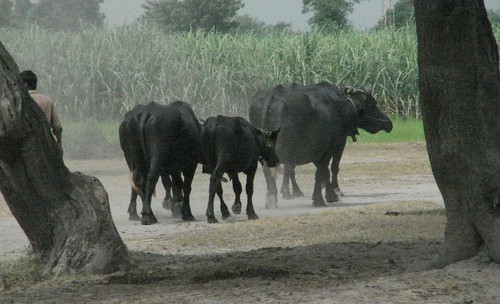
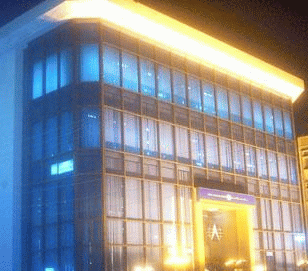
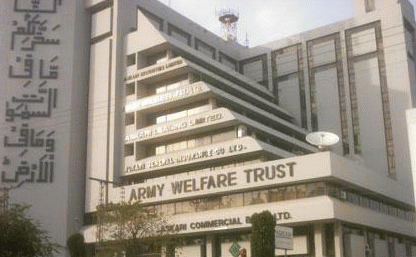
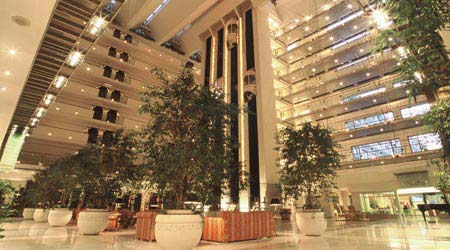
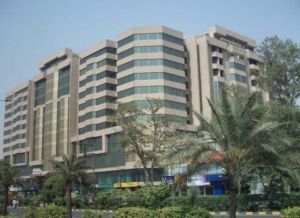
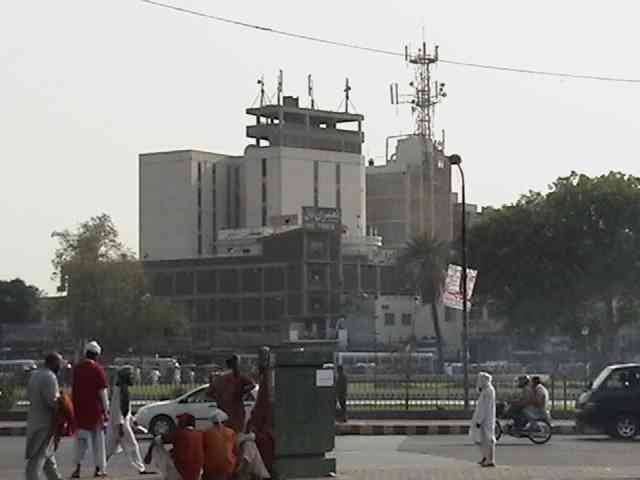

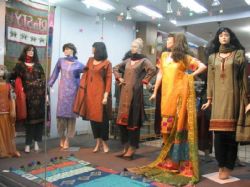
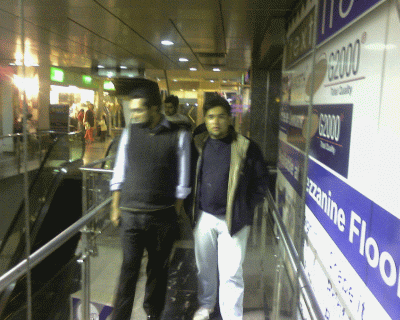
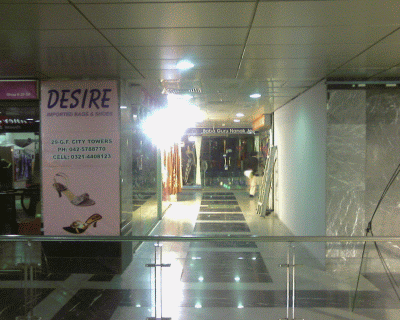


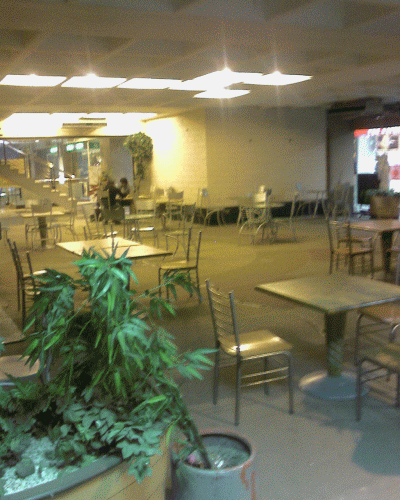
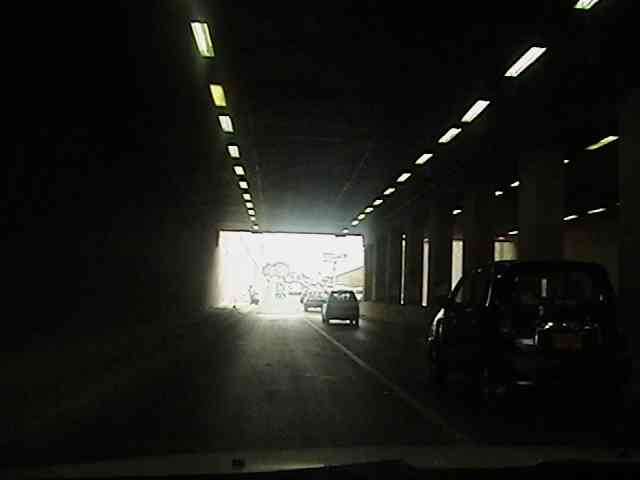
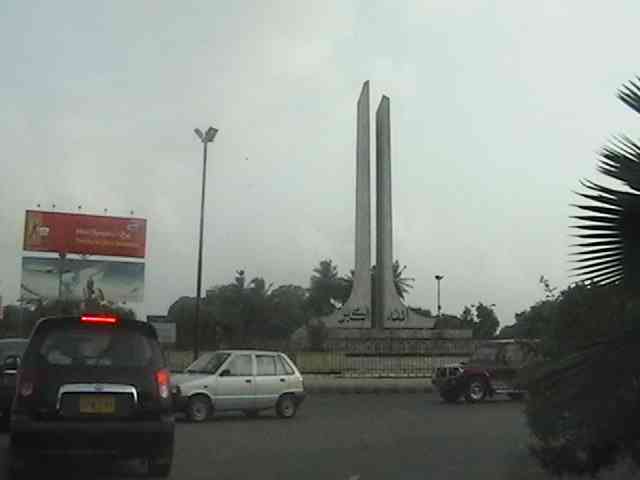
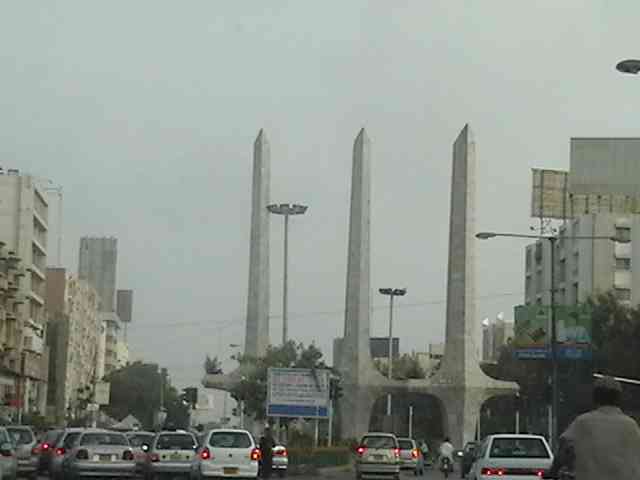
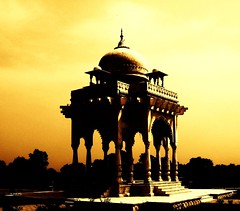

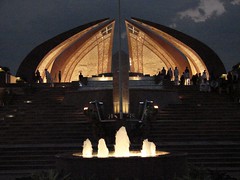
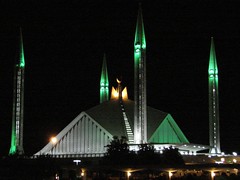
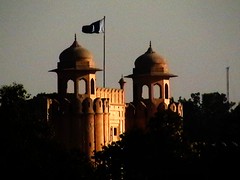

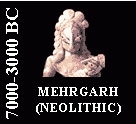 Mehrgarh civilization in the foot hills of Bolan Pass and arid Kachi plain of Balochistan province of Pakistan is the the earliest known farming settlement in South Asia, which once thrived around 7000 BC until the end of Indus valley civilization. Neolithic Mehrgarh consists of four mounds. The remains show that around 5100 BC, the Mehrgarh inhabitants constructed mud-brick structures. The remains of a large town spread over some 170 acres makes it the largest in the ancient world, being five times the size of the contemporary Catal Huyuk site in Turkey which has been called the largest Neolithic site in the Near East. It may be added that the entire population of Egypt was around 30,000 persons around 6000 BC, almost same as of Mehrgarh alone.
Mehrgarh civilization in the foot hills of Bolan Pass and arid Kachi plain of Balochistan province of Pakistan is the the earliest known farming settlement in South Asia, which once thrived around 7000 BC until the end of Indus valley civilization. Neolithic Mehrgarh consists of four mounds. The remains show that around 5100 BC, the Mehrgarh inhabitants constructed mud-brick structures. The remains of a large town spread over some 170 acres makes it the largest in the ancient world, being five times the size of the contemporary Catal Huyuk site in Turkey which has been called the largest Neolithic site in the Near East. It may be added that the entire population of Egypt was around 30,000 persons around 6000 BC, almost same as of Mehrgarh alone.  Stone sickles found at Mehrgarh point towards wheat cultivation. Conch shells from the Arabian Sea (500 km distant) and lapis lazuli from Badakshan dating back to period after 5000 BC indicate trade networks. By 3500 BC Mehrgarh had grown into an important regional craft center. Pieces of painted pottery and ornaments (right) and figurines representing both humans and animals have also been discovered recently from the site. In what could be one of the earliest examples of dentistry, scientists at the University of Missouri-Columbia in the United States have found tiny, perfectly rounded holes in teeth found in Mehrgarh, which they suspect were drilled to repair tooth decay.
Stone sickles found at Mehrgarh point towards wheat cultivation. Conch shells from the Arabian Sea (500 km distant) and lapis lazuli from Badakshan dating back to period after 5000 BC indicate trade networks. By 3500 BC Mehrgarh had grown into an important regional craft center. Pieces of painted pottery and ornaments (right) and figurines representing both humans and animals have also been discovered recently from the site. In what could be one of the earliest examples of dentistry, scientists at the University of Missouri-Columbia in the United States have found tiny, perfectly rounded holes in teeth found in Mehrgarh, which they suspect were drilled to repair tooth decay.  The habitation at Mehrgarh has been divided into seven periods, the first being the Pre-Pottery Neolithic period that dates to 7000 BC or even earlier. The site was abandoned between 2000 and 2500 BC during a period of contact with the Indus Civilization and then reused as a burial ground for some time after 2000 BC. It would not be wrong to conclude then that the Indus Valley civilization began neither in Mohenjo-Daro nor Harappa but at Mehrgarh, as the archeologists in the 1960s linked clues of Harappan genesis to Mehrgarh, when they found early indications of Harappan styles, specially the similarities in pottery designs.
The habitation at Mehrgarh has been divided into seven periods, the first being the Pre-Pottery Neolithic period that dates to 7000 BC or even earlier. The site was abandoned between 2000 and 2500 BC during a period of contact with the Indus Civilization and then reused as a burial ground for some time after 2000 BC. It would not be wrong to conclude then that the Indus Valley civilization began neither in Mohenjo-Daro nor Harappa but at Mehrgarh, as the archeologists in the 1960s linked clues of Harappan genesis to Mehrgarh, when they found early indications of Harappan styles, specially the similarities in pottery designs. 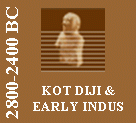 Many believe that Indus Valley civilization has been the oldest civilization that flourished in the Indian subcontinent. Mehrgarh Civilization, though broke this myth, there were yet other surprises. The excavations at Kot Diji, Sind Pakistan has revealed that before Indus Valley, there existed a civilization that is pre-Harappa and Harappa period occupations (ca. 3200-2000 BC).
Many believe that Indus Valley civilization has been the oldest civilization that flourished in the Indian subcontinent. Mehrgarh Civilization, though broke this myth, there were yet other surprises. The excavations at Kot Diji, Sind Pakistan has revealed that before Indus Valley, there existed a civilization that is pre-Harappa and Harappa period occupations (ca. 3200-2000 BC). 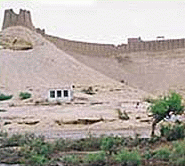 A forty-feet high archaeological site reflects the grandeur of the past and craftsmanship of those people. Historians and archaeologists are of the opinion that Indus Valley Civilization borrowed or developed some of the basic elements of life and culture from the civilization that was thriving at Kot Diji.
A forty-feet high archaeological site reflects the grandeur of the past and craftsmanship of those people. Historians and archaeologists are of the opinion that Indus Valley Civilization borrowed or developed some of the basic elements of life and culture from the civilization that was thriving at Kot Diji. 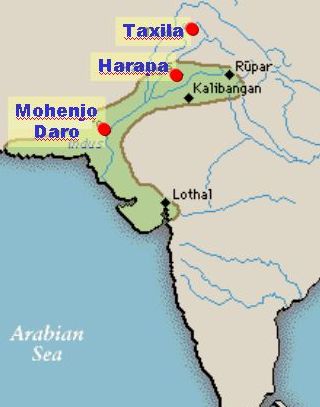 It is believed that with the destruction of fortified settlement on the site of Kot Diji somewhere between 2800-2500 BC, in what is said to be two separate burning events, the Indus Valley civilization settled in parts of lower Sind. Pottery at Mehrgarh begins to resemble a general Harappan fine geometric wheel-thrown tradition. Clay female figurines mark this period, possible precursors to the figurines of the later Indus society.
It is believed that with the destruction of fortified settlement on the site of Kot Diji somewhere between 2800-2500 BC, in what is said to be two separate burning events, the Indus Valley civilization settled in parts of lower Sind. Pottery at Mehrgarh begins to resemble a general Harappan fine geometric wheel-thrown tradition. Clay female figurines mark this period, possible precursors to the figurines of the later Indus society. 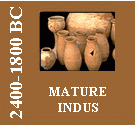 The later period of Indus Valley civilization from 2400-1800 BC, there is marked improvement in system of weights and measures, identical sized fire-backed bricks and standard writing system. So far about 700 sites have been discovered relating to the Indus Valley. Harappa, Mohenjo-Daro, and Ganweiwala are the larger sites of all spread over some 120 hectares and constructed like a citadel with separate public and residential areas, interspersed with road network. Extensive sewage and water drainage systems also are unique to Indus settlements.
The later period of Indus Valley civilization from 2400-1800 BC, there is marked improvement in system of weights and measures, identical sized fire-backed bricks and standard writing system. So far about 700 sites have been discovered relating to the Indus Valley. Harappa, Mohenjo-Daro, and Ganweiwala are the larger sites of all spread over some 120 hectares and constructed like a citadel with separate public and residential areas, interspersed with road network. Extensive sewage and water drainage systems also are unique to Indus settlements. 
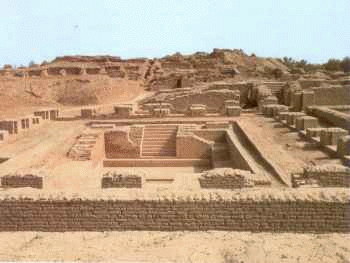
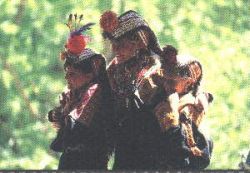
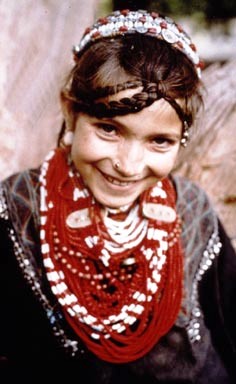 The the Kalash women wear long black robes and attractive headgear, skillfully made entirely of cowry's shells and buttons. Kalash keep their dead fully dressed in open coffins. The Nuristani carvings, handicrafts and motifs used to decorate the houses are a unique representation of their culture. The Kalash have always fascinated anthropologists and historians by their obscure origins, colourful festivals, and curious customs and rituals.
The the Kalash women wear long black robes and attractive headgear, skillfully made entirely of cowry's shells and buttons. Kalash keep their dead fully dressed in open coffins. The Nuristani carvings, handicrafts and motifs used to decorate the houses are a unique representation of their culture. The Kalash have always fascinated anthropologists and historians by their obscure origins, colourful festivals, and curious customs and rituals. 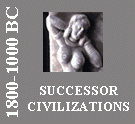 Gandhara and Buddhism are two civilizations that thrived in the northern parts of Pakistan from around the Vedic times and Greco-Buddhism is considered to be the cultural syncretism between the culture of Classical Greece and Buddhism, which developed over a period of close to 800 years in the area corresponding to modern-day Afghanistan and Pakistan, between the 4th century BCE and the 5th century CE. Greco-Buddhism influenced the artistic (and, possibly, conceptual) development of Buddhism, before it was adopted by Central and Northeastern Asia from the 1st century CE, ultimately spreading to China, Korea and Japan.
Gandhara and Buddhism are two civilizations that thrived in the northern parts of Pakistan from around the Vedic times and Greco-Buddhism is considered to be the cultural syncretism between the culture of Classical Greece and Buddhism, which developed over a period of close to 800 years in the area corresponding to modern-day Afghanistan and Pakistan, between the 4th century BCE and the 5th century CE. Greco-Buddhism influenced the artistic (and, possibly, conceptual) development of Buddhism, before it was adopted by Central and Northeastern Asia from the 1st century CE, ultimately spreading to China, Korea and Japan. "Gandhara" - the ancient name of the present day NWFP province of Pakistan is said to be the second home of Buddhism (after Bihar - India, where Buddha was born). Emperor Ashoka who ruled Maurya Dynasty somewhere in 270-230 BC was a staunch supporter of Buddhism. With the spread of Buddhism, monasteries sprang over in the length and breadth of present day Pakistan. The Swat Valley in present day Pakistan is the ancient Buddhist land of "Udeyana" which served as a threshold to western Asia and China. Once fourteen hundred monasteries flourished here at one time. Taxila is also one of the strongholds of Buddhism. It is mentioned as a territory of the Great Achaemenian Empire of Persia in the 6th century B.C. in inscriptions of Darius the Great at Behistun and is famous for the rare specimens of stucco from the Gandhara period excavated from Sirkap and various Buddhist Stupas and Monasteries. The Dharmarajika stupa in Taxila, built by Ashoka contains a relic of Buddhism. Taxila came to an inglorious end around 450 A.D. when it was ransacked by hordes of White Huns.
"Gandhara" - the ancient name of the present day NWFP province of Pakistan is said to be the second home of Buddhism (after Bihar - India, where Buddha was born). Emperor Ashoka who ruled Maurya Dynasty somewhere in 270-230 BC was a staunch supporter of Buddhism. With the spread of Buddhism, monasteries sprang over in the length and breadth of present day Pakistan. The Swat Valley in present day Pakistan is the ancient Buddhist land of "Udeyana" which served as a threshold to western Asia and China. Once fourteen hundred monasteries flourished here at one time. Taxila is also one of the strongholds of Buddhism. It is mentioned as a territory of the Great Achaemenian Empire of Persia in the 6th century B.C. in inscriptions of Darius the Great at Behistun and is famous for the rare specimens of stucco from the Gandhara period excavated from Sirkap and various Buddhist Stupas and Monasteries. The Dharmarajika stupa in Taxila, built by Ashoka contains a relic of Buddhism. Taxila came to an inglorious end around 450 A.D. when it was ransacked by hordes of White Huns. 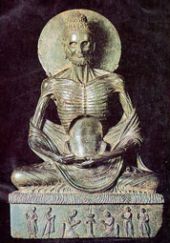 In the 15th century, the Buddhist culture of the north-west was destroyed by the invasion of White Huns, and monasteries were burnt and cultural life started to extinct. From early 4th to 6th century, the famous Gupta Dynasty struggled to withstand the Huns, but finally capitulated. During Guptas, the Hinduism gained its importance, the effects of which started being felt in Punjab and Sind as well. Even after the advent of Islam in the 7th century, both Hinduism and Buddhism continued to flourish owing to liberal policies of the Arabs. The peaceful co-existence lasted well into 10th century AD. Some of the Buddhist relics found in Sind date back to 11th century AD. As the spread of Islam became pronounced, the artists/sculpturists who had been associated with statues and engravings diverted to Islamic architecture and designs.
In the 15th century, the Buddhist culture of the north-west was destroyed by the invasion of White Huns, and monasteries were burnt and cultural life started to extinct. From early 4th to 6th century, the famous Gupta Dynasty struggled to withstand the Huns, but finally capitulated. During Guptas, the Hinduism gained its importance, the effects of which started being felt in Punjab and Sind as well. Even after the advent of Islam in the 7th century, both Hinduism and Buddhism continued to flourish owing to liberal policies of the Arabs. The peaceful co-existence lasted well into 10th century AD. Some of the Buddhist relics found in Sind date back to 11th century AD. As the spread of Islam became pronounced, the artists/sculpturists who had been associated with statues and engravings diverted to Islamic architecture and designs. 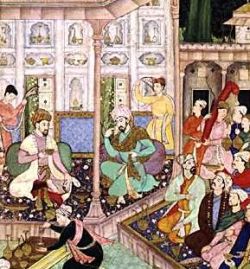 With the emergence of Zaheer ud Din Muhammad Baber, a descendant of Tamerlane, the Mughul rule set-in in 1526 AD in the Indian sub-continent. Mughal Empire was born after Lodhis were defeated at famous battle field of Panipat. Babur's kingdom stretched from beyond Afghanistan to the Bengal region along the Gangetic Plain.
With the emergence of Zaheer ud Din Muhammad Baber, a descendant of Tamerlane, the Mughul rule set-in in 1526 AD in the Indian sub-continent. Mughal Empire was born after Lodhis were defeated at famous battle field of Panipat. Babur's kingdom stretched from beyond Afghanistan to the Bengal region along the Gangetic Plain.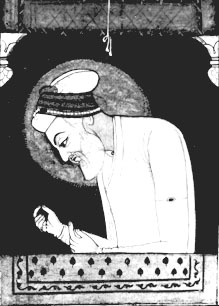 After Akbar, Shah Jehan, Jahangir and Aurangzeb (portrait left)ruled India. Although he was an outstanding general and a rigorous administrator, Aurangzeb's aggressive expansion of the frontiers of the empire weakened his rule And with his demise the the Mughul empire started to crumble and finally collapsed in 1857 with the British taking over the reins of India for yet another century.
After Akbar, Shah Jehan, Jahangir and Aurangzeb (portrait left)ruled India. Although he was an outstanding general and a rigorous administrator, Aurangzeb's aggressive expansion of the frontiers of the empire weakened his rule And with his demise the the Mughul empire started to crumble and finally collapsed in 1857 with the British taking over the reins of India for yet another century.  Although the British Empire expanded, the native Indians never accepted their dominance. On May 10, 1857, Indian soldiers of the British Indian Army, drawn mostly from Muslim units from Bengal, rose against the British in the Meerut garrison some 80 km from Delhi and marched to Delhi. The rising was mainly to protest against the use of the newly issued rifle bullets, alleged to have a wax sealing made of the fats of pigs that was to be removed from the teeth before use. Since pigs are forbidden in the Islam, the Muslim soldiers resented its use and took up arms against their British masters. At Delhi, they captured the famous "Lal Qila" (Red Fort) and reinstated Bahadar Shah Zafar (the last Mughul monarch) to throne. Soldiers in other garrisons also followed the suit and soon much of north and central India was plunged into a year-long insurrection against the British. The British reacted and laid a siege of the Fort, which continued for a while but finally the British owing to their access to artillery and large number of forces stormed the Fort. Bahadur Shah Zafar fled to Humayun's tomb. The British plundered Delhi and killed many Indian soldiers (and civilians) and artillery was set up in the main mosque in the city to bombard suspected localities, specially the homes of the Muslim nobility. The British forces also arrested Bahadur Shah and days after the arrest, a British officer William Hodson shot Shah's sons Mirza Moghul, Mirza Khizr Sultan, and Mirza Abu Bakr and shamefully presented their heads to the Shah.
Although the British Empire expanded, the native Indians never accepted their dominance. On May 10, 1857, Indian soldiers of the British Indian Army, drawn mostly from Muslim units from Bengal, rose against the British in the Meerut garrison some 80 km from Delhi and marched to Delhi. The rising was mainly to protest against the use of the newly issued rifle bullets, alleged to have a wax sealing made of the fats of pigs that was to be removed from the teeth before use. Since pigs are forbidden in the Islam, the Muslim soldiers resented its use and took up arms against their British masters. At Delhi, they captured the famous "Lal Qila" (Red Fort) and reinstated Bahadar Shah Zafar (the last Mughul monarch) to throne. Soldiers in other garrisons also followed the suit and soon much of north and central India was plunged into a year-long insurrection against the British. The British reacted and laid a siege of the Fort, which continued for a while but finally the British owing to their access to artillery and large number of forces stormed the Fort. Bahadur Shah Zafar fled to Humayun's tomb. The British plundered Delhi and killed many Indian soldiers (and civilians) and artillery was set up in the main mosque in the city to bombard suspected localities, specially the homes of the Muslim nobility. The British forces also arrested Bahadur Shah and days after the arrest, a British officer William Hodson shot Shah's sons Mirza Moghul, Mirza Khizr Sultan, and Mirza Abu Bakr and shamefully presented their heads to the Shah. 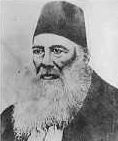 In order to keep the Muslims in the mainstream, rose Sir Syed Ahmad Khan and launched a movement for Muslim regeneration that culminated in the founding of the Muhammadan Anglo-Oriental College at Aligarh in 1875 (later renamed Aligarh Muslim University in 1921). Its objective was to educate Muslims by emphasizing the compatibility of Islam with western knowledge.
In order to keep the Muslims in the mainstream, rose Sir Syed Ahmad Khan and launched a movement for Muslim regeneration that culminated in the founding of the Muhammadan Anglo-Oriental College at Aligarh in 1875 (later renamed Aligarh Muslim University in 1921). Its objective was to educate Muslims by emphasizing the compatibility of Islam with western knowledge.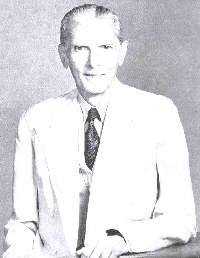 Muhammad Ali Jinnah, who had initially joined the Congress was grossly dissatisfied with the Congress attitude towards Muslims and thus joined the Muslim League in 1913. It was with his efforts that Congress recognized the separate position of the Muslims and the Muslims' demand for a separate electorate as a part of the Lucknow Pact. However the Hindu prejudice against the Muslims could not be hidden for long and the publication of Nehru Report (1928) was a great setback to Lucknow Pact, since the Nehru Report negated all its clauses. It became evident that Congress and Hindus wanted to become the ruler of India on the basis of numerical strength and make Muslims their subjects. This was not acceptable to Muslims since they had ruled India for centuries and after British subjugation, they were again to fall under the Hindus as their subjects. Jinnah therefore refused to accept the report and presented his famous 14 Points to solve the political problems in India.
Muhammad Ali Jinnah, who had initially joined the Congress was grossly dissatisfied with the Congress attitude towards Muslims and thus joined the Muslim League in 1913. It was with his efforts that Congress recognized the separate position of the Muslims and the Muslims' demand for a separate electorate as a part of the Lucknow Pact. However the Hindu prejudice against the Muslims could not be hidden for long and the publication of Nehru Report (1928) was a great setback to Lucknow Pact, since the Nehru Report negated all its clauses. It became evident that Congress and Hindus wanted to become the ruler of India on the basis of numerical strength and make Muslims their subjects. This was not acceptable to Muslims since they had ruled India for centuries and after British subjugation, they were again to fall under the Hindus as their subjects. Jinnah therefore refused to accept the report and presented his famous 14 Points to solve the political problems in India. 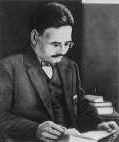 The Muslims wished that their separate identity should be recognized and provided constitutional safeguards to protect their rights. It was then that the first proponents of independent Muslim nation began to appear. Among the first of these was writer/philosopher Allama Iqbal, who felt that a separate nation for Muslims was essential in an otherwise Hindu-dominated subcontinent. The cause found a leader in Muhammad Ali Jinnah, who became known as Father of the Nation and eventually persuaded the British to partition the region into Muslim-majority Pakistan, and Hindu-majority India.
The Muslims wished that their separate identity should be recognized and provided constitutional safeguards to protect their rights. It was then that the first proponents of independent Muslim nation began to appear. Among the first of these was writer/philosopher Allama Iqbal, who felt that a separate nation for Muslims was essential in an otherwise Hindu-dominated subcontinent. The cause found a leader in Muhammad Ali Jinnah, who became known as Father of the Nation and eventually persuaded the British to partition the region into Muslim-majority Pakistan, and Hindu-majority India.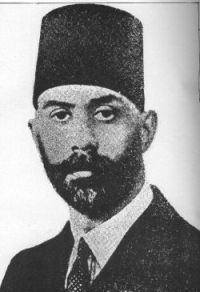 In the meantime Choudhary Rahmat Ali a ambridge student coined the word "PAKISTAN" for a would-be Muslim country, which was published on 28th January 1933 in the pamphlet "Now or Never." He made the name an acronym of the different states/homelands/regions, which broke down into:
In the meantime Choudhary Rahmat Ali a ambridge student coined the word "PAKISTAN" for a would-be Muslim country, which was published on 28th January 1933 in the pamphlet "Now or Never." He made the name an acronym of the different states/homelands/regions, which broke down into: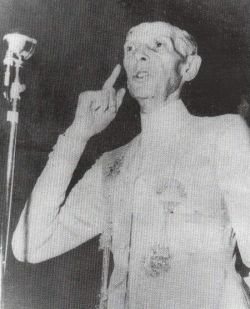 The British Government under the new constitution held the elections in 1937, in which Congress gained majority and formed government in six large provinces. In connivance with the government, Hindus started persecuting the Muslims and Hindi was introduced instead of Urdu. The introduction of "Bande Matram", the Hindus' national anthem did the rest. Therefore, the Muslim League decided to ask for a separate homeland for themselves as by now it was clear that both Hindus and Muslims could not co-exist under one flag. In the 27th annual session on 23 March 1940 at Lahore, the Muslim League under Jinnah demanded a separate homeland for the Muslims of Indian sub-continent. Thereafter, Muslims all over India were asked to join Muslims League to safe guard their identity. In the meantime the 2nd world War had already started and the British government wanted whole hearted Indian support, therefore the Viceroy promised that the constitution would be framed in consultation with representatives of the people after the war.
The British Government under the new constitution held the elections in 1937, in which Congress gained majority and formed government in six large provinces. In connivance with the government, Hindus started persecuting the Muslims and Hindi was introduced instead of Urdu. The introduction of "Bande Matram", the Hindus' national anthem did the rest. Therefore, the Muslim League decided to ask for a separate homeland for themselves as by now it was clear that both Hindus and Muslims could not co-exist under one flag. In the 27th annual session on 23 March 1940 at Lahore, the Muslim League under Jinnah demanded a separate homeland for the Muslims of Indian sub-continent. Thereafter, Muslims all over India were asked to join Muslims League to safe guard their identity. In the meantime the 2nd world War had already started and the British government wanted whole hearted Indian support, therefore the Viceroy promised that the constitution would be framed in consultation with representatives of the people after the war. On 14 August 1947, just 10 minutes before midnight, All India Radio (AIR) broadcast its last programme and thereafter, a song composed by Khawaja Khurshid Anwar was aired by the Lahore radio station. Then a minute before midnight a broadcast (in English by Mr Zahoor Ahmed and in Urdu by Mustapha ali Hamadani) informed the awaiting listeners that exactly at midnight Pakistan will emerge as an independent state on the world map. Then at exactly at midnight 14-15 August 1947, a broadcast in English, followed by in Urdu reached the listeners " This is Pakistan Broadcasting Service". This broadcast was followed by recitation of Holy Quran (Surah Al Fatah 1-4) by Maulana Zahir al Qasmi. This was followed by a "na'at" by Muhammad Azam Chishti, a "qaseeda" by Hafeez Jalandhari (later the architect of Pakistan
On 14 August 1947, just 10 minutes before midnight, All India Radio (AIR) broadcast its last programme and thereafter, a song composed by Khawaja Khurshid Anwar was aired by the Lahore radio station. Then a minute before midnight a broadcast (in English by Mr Zahoor Ahmed and in Urdu by Mustapha ali Hamadani) informed the awaiting listeners that exactly at midnight Pakistan will emerge as an independent state on the world map. Then at exactly at midnight 14-15 August 1947, a broadcast in English, followed by in Urdu reached the listeners " This is Pakistan Broadcasting Service". This broadcast was followed by recitation of Holy Quran (Surah Al Fatah 1-4) by Maulana Zahir al Qasmi. This was followed by a "na'at" by Muhammad Azam Chishti, a "qaseeda" by Hafeez Jalandhari (later the architect of Pakistan  14 August, 1947 Pakistan is born, but premature death of Jinnah leaves a political turmoil that results into formation of nine governments within a span of 9 years.
14 August, 1947 Pakistan is born, but premature death of Jinnah leaves a political turmoil that results into formation of nine governments within a span of 9 years. 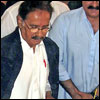
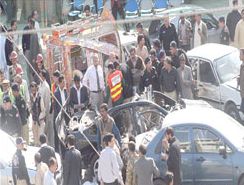 25 February 2008:
25 February 2008: The choice of Yousaf Raza Gilani as the Pakistan People's Party's candidate for prime minister initially raised as many questions since it was expected the oldest loyalist Makhdoom Amin Fahim would be the PM. The initial stir has since subsided and the new PM is in chair - though many believe that he is merely the mouth piece of the part while the actual strings are still in the hands of Mr. Zardari. Although the affairs of the government and the presidency seem cordial with smiles on the face of it, but many a storm are hidden behind the scene and it is only marriage of convenience that is holding the two "liking each other". On the other hand the coalition government of PPP and PML (N) is basically hinged on one agenda - restoration of the deposed judges and the CJ of the Supreme Court Mr Justice Iftikhar. There is much overshadow on the issue and no one is for sure what is in the offing and whether the judges be restored or otherwise.
The choice of Yousaf Raza Gilani as the Pakistan People's Party's candidate for prime minister initially raised as many questions since it was expected the oldest loyalist Makhdoom Amin Fahim would be the PM. The initial stir has since subsided and the new PM is in chair - though many believe that he is merely the mouth piece of the part while the actual strings are still in the hands of Mr. Zardari. Although the affairs of the government and the presidency seem cordial with smiles on the face of it, but many a storm are hidden behind the scene and it is only marriage of convenience that is holding the two "liking each other". On the other hand the coalition government of PPP and PML (N) is basically hinged on one agenda - restoration of the deposed judges and the CJ of the Supreme Court Mr Justice Iftikhar. There is much overshadow on the issue and no one is for sure what is in the offing and whether the judges be restored or otherwise.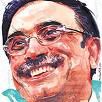 Well another fathom covered when on 6 September 2008, the presidential election was held in two houses of parliament and all provincial assemblies.
Well another fathom covered when on 6 September 2008, the presidential election was held in two houses of parliament and all provincial assemblies. 
No comments:
Post a Comment